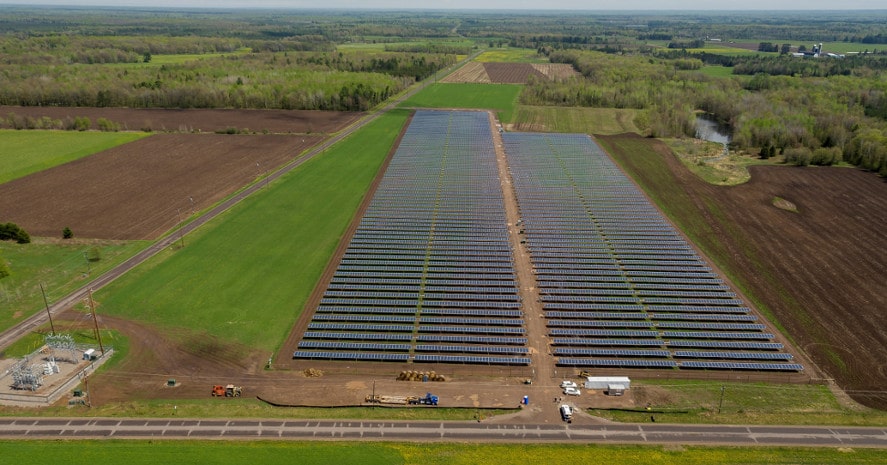The New Hampshire Senate has passed Senate Bill 446, ‘An act relative to net energy metering limits for customer-generators.’ The bill now heads to the House for consideration.
The bill would expand the limit on the capacity of renewable energy installations which can participate in the state’s net metering program from 1 MW to 5 MW. Additionally, sites with up to 5 MW of capacity are allowed as parts of larger projects up to 25 MW in capacity.
The also begins also orders state regulators to begin a process to determine a final rate for compensation for renewable energy projects within six months, as a further move away from retail rate net metering. Existing systems will be grandfathered in for 12 years, but then will move to the final rate.
SB 446 also sets out criteria for setting those rates
costs and benefits of customer generated facilities, avoidance of unjust and unreasonable cost shifting, rate effects on all customers, timely recovery of lost revenue by the utility using an automatic rate adjustment mechanism and electric distribution utilities administrative processes required to implement such rates.
The net metering program applies to hydroelectricity, wind, solar and other renewable energy sources.
2017 was a busy year for New Hampshire solar. The state eliminated a 100 MW limit on total net metering generation and in June, the PUC voted to keep the broader net-metering structure in place for system under 100 kilowatt (kW), while altering the compensation structure. Customer-sited generation still receives credits for 100% of generation and transmission costs, however distribution credits were lowered to 25% from 100%.
In this hearing in 2017, the PUC rejected the the utility’s argument that the current system unfairly shifts costs for the grid from solar to non-solar users, saying that the penetration rates are too low. This is in line with similar findings in other states.
The U.S. Department of Energy’s Energy Information Agency (EIA) shows solar representing 0.5% of New Hampshire 2017 electricity generation, or 87 gigawatt-hours (GWh) out of 17,500 GWh total generation, and found no solar plants larger than 1 MW. Of the 87 GWh of production, 56 GWh of that came from residential systems.
The total volume of solar power in New Hampshire grew almost 69% in 2017 over 2016, but the state’s rebate program hit a granite wall in the middle of the year.
This content is protected by copyright and may not be reused. If you want to cooperate with us and would like to reuse some of our content, please contact: editors@pv-magazine.com.








By submitting this form you agree to pv magazine using your data for the purposes of publishing your comment.
Your personal data will only be disclosed or otherwise transmitted to third parties for the purposes of spam filtering or if this is necessary for technical maintenance of the website. Any other transfer to third parties will not take place unless this is justified on the basis of applicable data protection regulations or if pv magazine is legally obliged to do so.
You may revoke this consent at any time with effect for the future, in which case your personal data will be deleted immediately. Otherwise, your data will be deleted if pv magazine has processed your request or the purpose of data storage is fulfilled.
Further information on data privacy can be found in our Data Protection Policy.